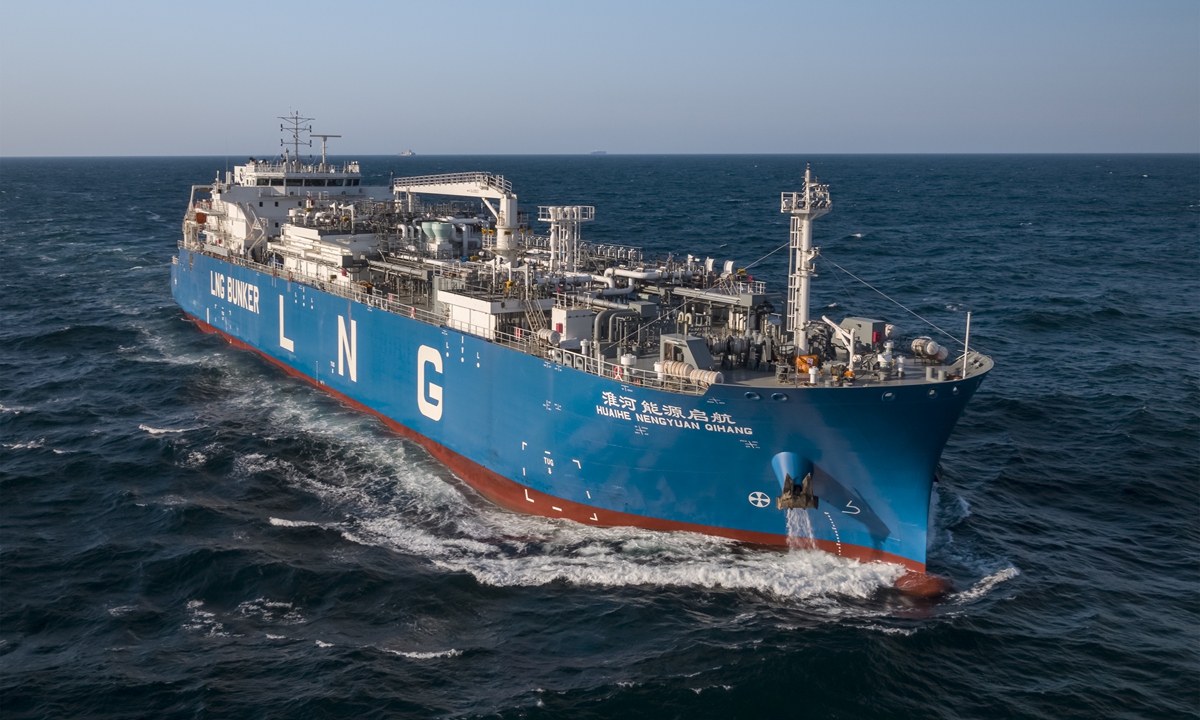
The 14,000-cubic-meter LNG bunkering and transport vessel "Huaihe Nengyuan Qihang" Photo: Courtesy of Hudong-Zhonghua Shipbuilding (Group) Co
China has delivered the world's first 14,000 cubic meters liquefied natural gas (LNG) bunkering and transport vessel capable of river-sea navigation in Shanghai, breaking international technology barriers with a record of more than 85 percent in the localization rate.
The vessel,
Huaihe Nengyuan Qihang, built by Hudong-Zhonghua Shipbuilding (Group) Co, a subsidiary of the China State Shipbuilding Corp, was delivered and named in Shanghai two months ahead of schedule, the company told the Global Times on Sunday.
The completion of the vessel is of great significance for implementing the carbon emissions reduction strategy along the Yangtze River, promoting LNG-powered vessel refueling in the Yangtze River Basin, and opening up inland LNG vessel transport channels, according to the vessel's builder.
The ship is 130 meters long, 23.6 meters wide and has a depth molded level of 15 meters. Its dual-fuel propulsion system allows the vessel to navigate along the Yangtze River as well as in deep-sea areas.
The delivery of the ship reflects the application of several localization technological breakthroughs, especially within the main equipment used in the vessel's cooling system, and other facilities such as LNG compressors and incinerators, dual-fuel power generator sets, the vessel's power distribution system, and electric propulsion systems.
Multiple domestically made components mean the ship has a localization rate of more than 85 percent, making it China's LNG storage and transport equipment with the highest localization rate, according to the company.
Hudong-Zhonghua said that the Yangtze River is China's major east-west waterway, with an annual water transport capacity exceeding 3 billion tons, accounting for more than 60 percent of the country's total inland waterway transportation.
For a long time, the Yangtze River water transport has relied on vessels powered by diesel and heavy oil, leading to increasingly severe environmental pollution issues.
In June 2023, the
"Initiative of E-Yangtze River" was jointly released by the Ministry of Transport and 13 provinces and cities, aiming to address the carbon emission issues of the river.




